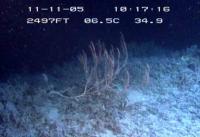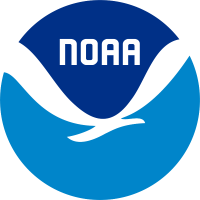
Characterizing U.S. Deep-Sea Corals and Sponges
Imagine a world of total darkness and numbing cold. It may be difficult for sun-loving humans to believe, but certain hardy beings can not only survive, but thrive in such an environment. Lush coral reefs are an example of animals that flourish in this type of habitat found 10,000 ft (3,000 m) below the ocean’s surface.
Source: NOAA Okeanos Explorer Program
Deep-sea corals and sponges live mostly unseen and untouched by humans at ocean depths of at least 164 ft (50 m), though most species are found several hundreds of feet deep. As they live in a dark, desolate setting, it would be easy to assume that these organisms would have a drab appearance to match their surroundings. However, most of them come in a variety of beautiful colors—purple, red, blue, gold, pink, and orange to name a few. With over 3,000 identified species of deep-sea coral and 4,000 species of sponges worldwide, they are clearly a major part of the ocean ecosystem.
Crucial Corals and Sponges
Deep-sea corals and sponges can live for hundreds or thousands of years, and most grow extremely slowly. Once damaged, corals and the communities they support may take centuries to recover, if they recover at all. They are vulnerable to disturbances from fishing, mining, and toxic waste dumping that happen on the seafloor. Additionally, ocean acidification, a result of the ocean absorbing increased carbon dioxide, can affect corals’ ability to grow and maintain their structures.
Source: NOAA Okeanos Explorer Program
While most of us may never have the chance to see these deep-sea corals and sponges in their natural setting, it’s still in our best interests to protect them from harm. They provide a vital habitat for numerous fish and invertebrate species, including commercially important grouper, snapper, sea bass, rockfish, shrimp, and crab. Deep-sea corals and sponges are also home to organisms that produce chemicals with great potential for biomedical uses.
Exploring the Deep
Though scientists have discovered deep-sea coral and sponge habitats on continental shelves, slopes, canyons, and seamounts, their full geographic extent is still unknown. NOAA’s Deep Sea Coral Research and Technology Program (DSCRTP) studies and provides scientific information needed to conserve deep-sea coral and sponge ecosystems. This information is also necessary in order to manage these ecosystems and the human activities surrounding them.
Source: NOAA Okeanos Explorer Program
One of the efforts of NOAA’s DSCRTP and its partners is site characterization, which describes the biodiversity, habitats, populations, communities, and ecological processes of a particular area. Using diving robots, camera systems, and seafloor mapping sonar, scientists explore, study and compile a summary of each site, which can be viewed throughout this StoryMap.
Dive in to explore a fascinating and significant piece of our ocean’s ecosystem. In the following regional sections, you’ll find site summaries, images, and maps of our vitally important deep-sea coral habitat. Whether you’re a research scientist or simply an ocean lover, you’ll find a plethora of coral data to look at.
An interactive map of site characterizations that are highlighted in this StoryMap. Zoom in to view deep-sea coral and sponge observations.
Each region in this StoryMap is displayed as a "map tour". Explore the site characterizations by either clicking on the thumbnail images, or on the points on the map. When a site characterization is selected, the map will zoom in to that area. Return to the main map by clicking the "X" button. For reference, deep-sea coral and sponge observations are shown as black circles, or dots.
Alaska
Aleutian Islands
The central and western Aleutian Islands may have the most abundant cold-water coral and sponge communities in the world. Covering 64,415 square kilometers, the islands stretch westward from the Alaska Peninsula across the North Pacific Ocean. The chain of islands comprises a series of active volcanoes with a relatively deep continental shelf (250 meters).
Dominant currents on the south side of the islands include the Alaskan Stream and the Alaska Coastal Current (ACC), which flow westward, as opposed to the eastward flowing Aleutian North Slope Current on the north side of the islands in the Bering Sea.
A naturally occurring faunal division in fish and invertebrate species occurs for abundance and diversity near Samalga Pass (170° W). To the west of Samalga Pass, deep-sea coral and sponge diversity and abundance are greater than many other comparable locations around the world with 104 coral or subspecies of coral (104 coral taxa in the Aleutians, 62 are found nowhere else in Alaska, 50 of 62 have complete taxonomy), of which 34 are endemic, along with 136 confirmed species or subspecies of sponges ( Stone et al., 2023 ).
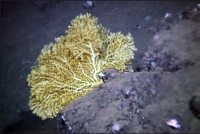
Akutan Island to Samalga Pass
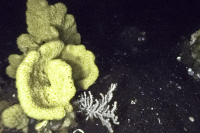
Samalga Pass to Seguam Pass
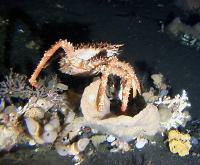
Seguam Pass to Amchitka Pass
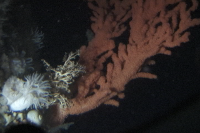
Amchitka Pass to Buldir Pass
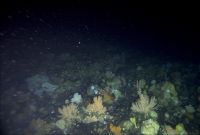
Buldir Pass to Near Pass
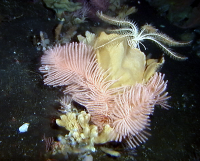
Bowers Bank
Bering Sea
The Bering Sea is known for its booming fishing industry. Over 300 fish species call this area home with 50 deep-sea commercial species, of which 25 are fished at high rates. The salmon, cod, herring, halibut, flounder, and pollock industries generate the highest revenue of fisheries in the region.
There is an abundance of life throughout the Bering Sea canyons from numerous major taxonomic groups of fish and crab species -- Chionoecetes crabs, grenadiers, and rockfish being the most common.
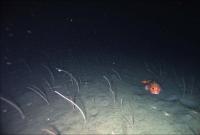
Bering Canyon
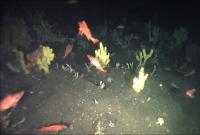
Bering Canyon to Pribilof Canyon
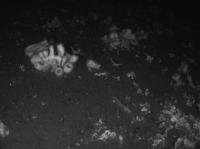
Pribilof Canyon
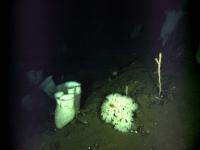
Pribilof Canyon to Zhemchug Canyon
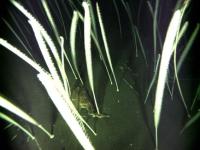
Zhemchug Canyon
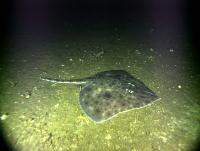
Zhemchug Canyon to Pervenets Canyon
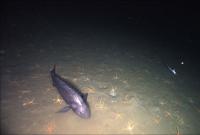
Pervenets Canyon
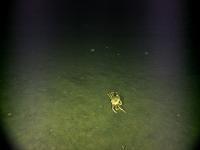
Bering Sea Shelf
California
California coastal waters are characterized by the seasonal upwelling of cold, nutrient-rich bottom water that drives productivity. The California coast is the meeting point of cold northern California Current waters and warm southern waters coming from Mexico. This produces a dynamic environment where many different species converge.
California has a diverse assemblage of deep-sea geological features, including a number of rocky banks, seamounts, basins, and submarine canyons.
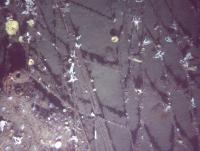
Bodega Canyon
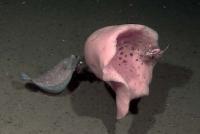
Channel Islands NMS (2011)
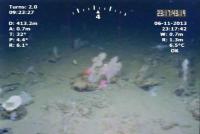
Channel Islands NMS (2013)
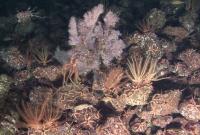
Christmas Tree Black Coral Community
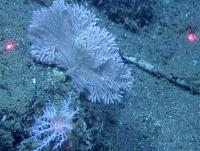
Cordell Bank NMS
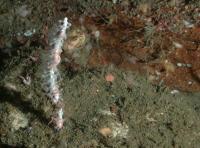
Greater Farallones Expansion
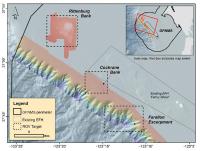
Greater Farallones NMS
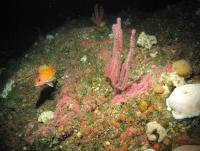
Greater Farallones NMS: Rittenburg Bank
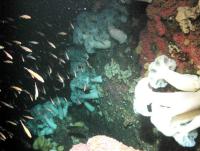
Greater Farallones NMS: Cochrane Bank
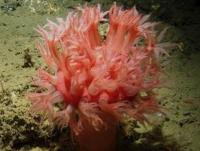
Greater Farallones NMS: Farallon Escarpment
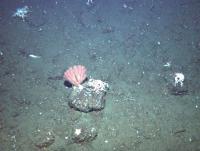
Piggy Bank AUV
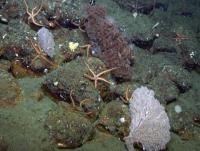
Piggy Bank ROV
Gulf of America
This region is unique in many ways, partly due to unusual geological history and resulting physiographic features that provide substrate for deep corals and sponges. Another reason is the Loop Current, which flows from the Caribbean through the Florida Straits.
The Gulf spans from the outer portions of the continental shelf almost 150 m in depth across the continental slope to some of the deepest portions nearly 3,000 m in depth. It is considered one of the most geologically complex continental slopes in the world.
The geological complexity supports a high diversity of deep corals, each adapted to different environmental conditions.
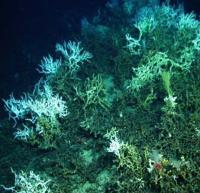
West Florida Slope
Northwest
The Oregon and Washington continental margin in this region is characterized by a relatively narrow (5 to 40 km in width) shelf and a steep continental slope, with the shelf break existing at a water depth of approximately 200 m.
This area is wholly within the California Current Large Marine Ecosystem (LME). The California Current LME is a transition ecosystem between subtropical and subarctic water masses and is characterized by seasonal upwelling.
Relatively large estuaries border the area, including those associated with the Puget Sound and Columbia River. Fishing for salmon, groundfish, small coastal pelagic species, highly migratory species, and invertebrates (most notably squid, crab, shrimp, and sea urchins) is significant throughout this region.
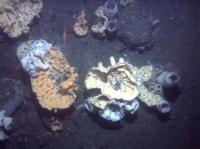
Grays Canyon
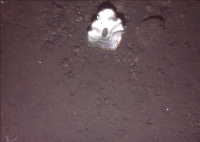
Olympic Coast NMS: AUV 2010
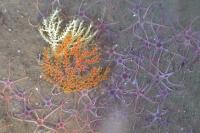
Olympic Coast NMS: ROV 2006
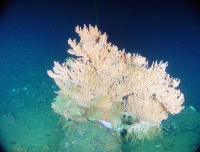
Olympic Coast NMS: ROV 2008
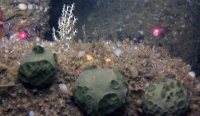
Olympic Coast NMS: ROV 2010
Southeast
The Southeast U.S. region stretches from the Straits of Florida to Cape Hatteras, North Carolina and encompasses associated deeper waters of the Blake Plateau, as well as a small portion of the Caribbean off the Florida Keys.
Within U.S. waters, deep-sea stony coral reefs reach their greatest abundance and development in this region. This warm temperate region is strongly influenced by the northern-flowing Gulf Stream ocean current.
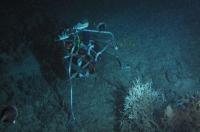
Cape Canaveral North
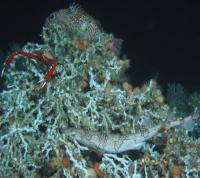
Cape Canaveral Shallow
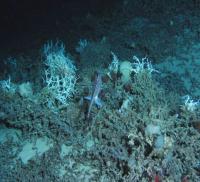
Cape Canaveral South
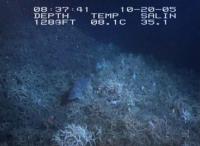
Cape Fear Lophelia Banks

Cape Lookout
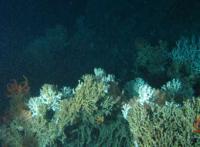
Charleston Bump
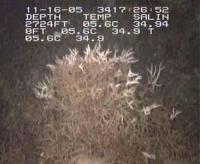
Florida Straits (2005)
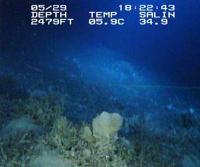
Florida Straits (2007)
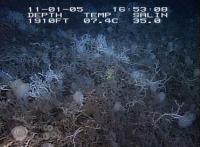
Jacksonville Lithoherms (2005)
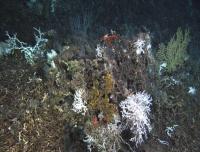
Jacksonville Lithoherms (2010)
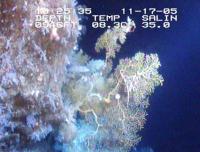
Miami Terrace (2005)
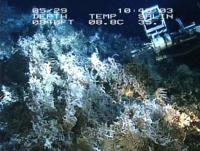
Miami Terrace (2007)
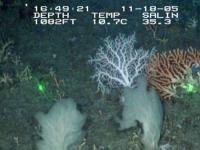
Pourtalès Terrace (2005)
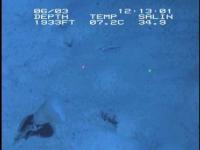
Pourtalès Terrace (2007)
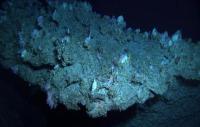
Pourtalès Terrace (2010)
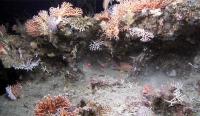
Pourtalès Terrace (2011)
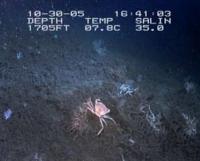
Savannah Banks
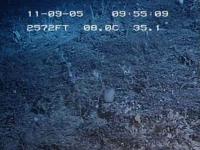
St. Augustine
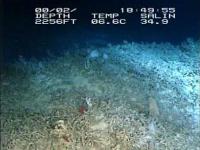
St. Lucie Bump
